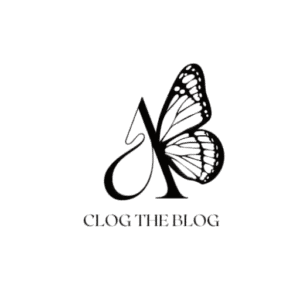 Your resume is your personal marketing. The information in the resume shows our education
Your resume is your personal marketing. The information in the resume shows our education
and experience so that we present ourselves perfectly in front of others. In today’s competitive
job market, a well-crafted resume can be the difference between getting hired and being
overlooked. We should prepare our resume perfectly. For this, we can use resume writing tips when we go for an interview. Things should be shown clearly to the interviewer, and it should have a positive effect.
In this comprehensive resume writing guide, we’ll walk you through actionable resume writing tips and essential resume formatting tips to help you create a stand-out resume. Whether you’re a fresher, an experienced professional, or someone switching careers, this article will guide you every step of the way.
Why a Well-Written Resume Matters
While making a resume, we have to keep in mind that the resume is being made properly so
that the interviewer shortlists the resume. In every interview, the interviewer spends 5 to 6
seconds on each resume, and it is at that time that he has to decide which resume to shortlist.
Hence, we need to make a resume with the right tips and format.
A great resume:
● Number of pages: If you are applying for a core job, the number of pages
should not be more than 2. For non-core jobs, since you don’t need to
mention the technical details to that level of depth, you should try to keep
the resume within 1 page. A firm has to scan multiple applications, and they
don’t have the bandwidth to go through long resumes.
● Separate sections: The resume should have separate sections for academic
achievements, professional experience or internships, extracurricular
achievements, positions of responsibility, and so on. The order of the
sections depends on which section is the strongest.
● Proper formatting: The resume should be well formatted, with a consistent
and legible font. The individual points should be mentioned using bullets.
There should be the right amount of space between sections. The
important phrases should be emphasized using italics or bold font.
● Crisp points: Each point within the CV should not span more than one line. If you
have a point that spans two lines, try to break it into two separate one-line
points.
● No spelling errors: You must ensure that your resume does not have any spelling
errors. This is very important. If your resume has a spelling error, it means you
did not find it important enough to read it properly before submitting it to the
firm. Nothing irks firms more than spelling errors.
Step 1: Choose the Right Resume Format
The first and most crucial resume formatting tip is selecting the correct resume format. There
are three main formats to consider:
1. Chronological Resume Format
A professional resume should include the details of the candidate, their education and skills,
experience, and objectives. Use clear headings, bullet points, and concise language to convey
your accomplishments and responsibilities.
2. Functional Resume Format
A functional resume format highlights the candidate’s skills and work history.
Here are some points:
● Use standard fonts like Arial, Calibri, or Times New Roman (10–12 pt).
● Keep margins between 0.5 to 1 inch.
● Use bullet points to organize information.
● Ensure consistent spacing and alignment.
● Certifications and licenses. …
● Skills. …
● Awards and honors.
Step 2: Use a Clean, Professional Layout
Best cleaner skills to list on a resume
● Excellent knowledge of detergents and cleaning chemicals.
● Experience in operating cleaning equipment, including vacuums and carpet cleaners.
● Knowledge of health and safety procedures.
● Experience in handling hazardous cleaning chemicals, including storage and disposal.
Key Sections Every Resume Should Include:
● Header and Contact information. At the beginning of your resume, start by listing your
contact information. …
● Objective or summary. Next, include your professional objective or a career summary. …
● Work experience. …
● Education. …
● Certifications and licenses. …
● Skills. …
● Awards and honors.
Step 3: Write a Strong Resume Summary or Objective
Your resume summary is the hook. It tells employers why you’re the right fit in just a few lines.
Resume Summary (for experienced professionals):
A professional summary should follow this formula:
● Your years of experience and job title.
● Some of your biggest achievements to date.
● A couple of your most essential skills that are relevant for the role.
Step 4: Focus on Achievements, Not Just Duties
Many people list job responsibilities. But standout resumes focus on achievements and impact.
By highlighting accomplishments, you provide concrete evidence of your skills, abilities, and the
impact you made in previous positions.
Use the STAR Method:
● Situation: What was the context?
● Task: What was your role?
● Action: What did you do?
● Result: What did you achieve?
Step 5: Optimize for ATS (Applicant Tracking Systems)
Over 75% of large companies use ATS to filter resumes before a human sees them. To pass
these systems:
✔ Uses job-related keywords (skills, job titles, qualifications)
✔ Follows a simple format (no fancy designs that confuse ATS)
✔ Includes clear headings like “Work Experience” and “Education”
✔ Uses standard fonts (Arial, Times New Roman, Calibri)
✔ Avoids images, charts, or special symbols that ATS can’t read
Step 6: Tailor Your Resume for Each Job
● Rewrite your resume as per the job requirements.
● Prioritizing skills and experiences mentioned in the job description.
● Aligning your achievements with the company’s goals
Step 7: List Relevant Skills
Recruiters scan for key competencies quickly. Make sure that your skills include hard skills like
Excel, Python, JavaScript, and soft skills (e.g., communication, leadership, time management).
Step 8: Highlight Education and Certifications
Include your most recent or relevant education first. Mention:
You have to include all the things related to education in your resume, like the education field,
name, degree, and information about when you got married
Step 9: Keep It Concise and Impactful
If you are a fresher then you should have a 1 page resume and if you have experience then you
should have a 2 page resume. Avoid unnecessary fluff like “References available upon request.”
Keep your content tight, focused, and relevant.
Step 10: Proofread and Finalize
Use the Grammar Check Tool to remove grammar errors. Take reviews of your resume from
friends, and always keep your resume in PDF form. Use a PDF when applying for a new job
Bonus: Resume Writing Tips for Freshers
● Emphasize internships, academic projects, or volunteer work.
● Focus on transferable skills like teamwork, leadership, or research.
● Add a resume objective instead of a professional summary.
● Include relevant coursework or extracurricular achievements.
Common Resume Mistakes to Avoid
Even strong candidates lose opportunities due to small errors. Here are the most common
resume mistakes:
● Too Much Information.
● Résumé Template without Any Imagination.
● Wrong Level of English.
● Wrong Contact Information.
● Ignoring technological skills.
● Focus on responsibilities rather than results.
● No stats/data/quantified data.
● Burying most vital information below the top fold.
Final Thoughts
There are benefits of writing a resume in an effective way, following its tips and preparing a
resume in the correct format so that we can easily get our resume shortlisted for a job
Writing an effective resume is both an art and a science. By following the resume writing guide
above, using our resume writing tips, and implementing key resume formatting tips, you’ll
drastically improve your chances of landing interviews.
Remember: Your resume should tell a compelling story about your professional journey. Make it
clear, make it specific, and most of all — make it relevant.

